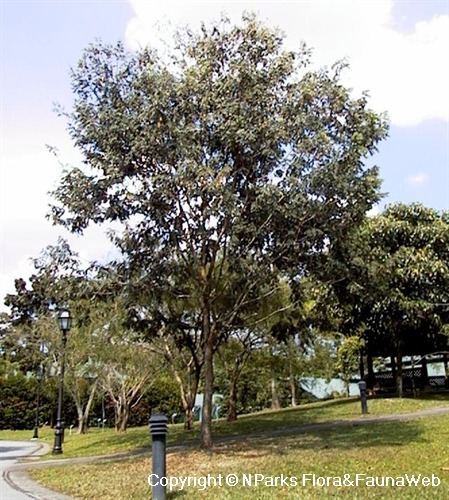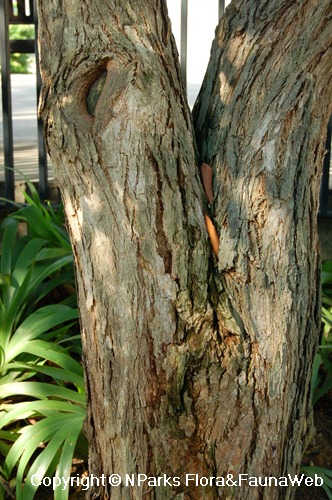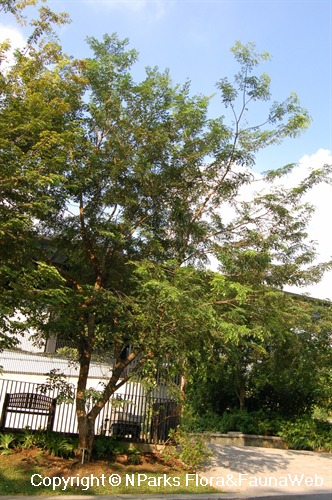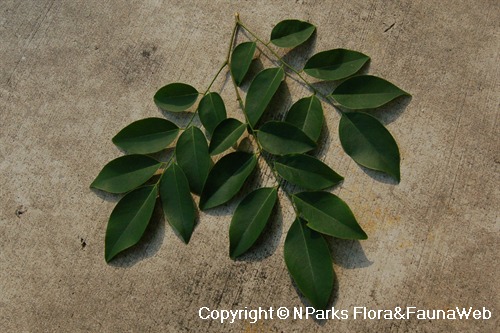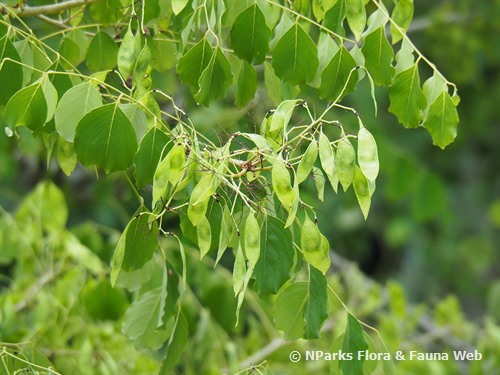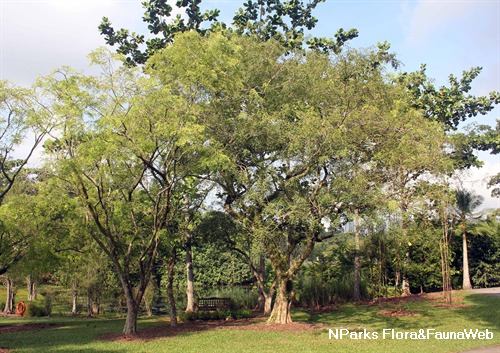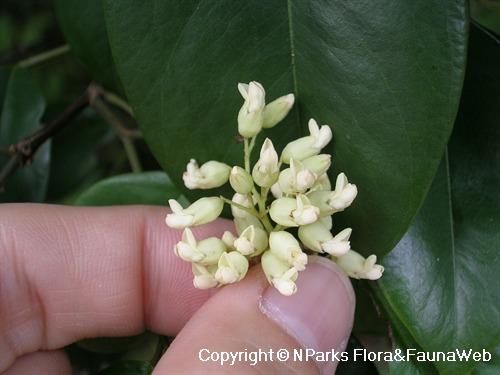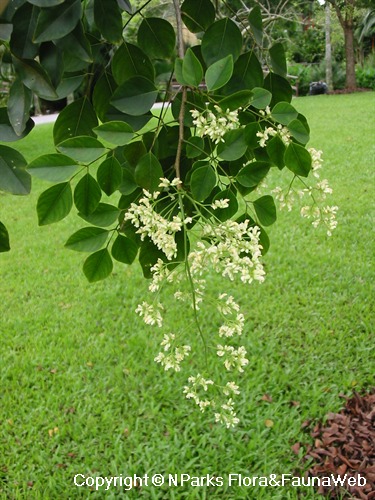
Back
Dalbergia cochinchinensis
| Family Name: | Fabaceae (Leguminosae) |
| Synonyms: | Dalbergia cambodiana |
| Common Name: | Thailand Rosewood, Trac, Tracwood |
Name
Classifications and Characteristics
| Plant Division | Angiosperms (Flowering Seed Plants) (Dicotyledon) |
|---|---|
| Plant Growth Form | Tree (Medium (16m-30m)) |
| Maximum Height | 25 m to 30 m |
Biogeography
| Native Distribution | Vietnam, Laos, Cambodia, Thailand |
|---|
Description and Ethnobotany
| Others - Plant Morphology | Growth Form: Tall, evergreen tree with a rounded crown that grows to a height of 30 m. Habitat: Occurs in dry or moist tropical forests (eg., open semi-deciduous or monsoon forests) on sandy clay and calcareous soils. Populations usually occur at low density, but several individuals sometimes grow together in pure stands. Usually occurs at an altitude of 400 - 500 m in locations where annual rainfall ranges from 1200 – 1650 mm. It is threatened with extinction due to overexploitation by the timber industry. Trunk: Bark brownish-yellow, fissured with pieces peeling off. This species becomes highly branched. It converts sapwood to heartwood at a slow rate. Foliage: Alternate arrangement of pinnately compound leaves. Each compound leaf consists of 3 - 4 pairs of leaflets and one terminal, unpaired leaflet. Pairs of lateral leaflets either emerge from the same point on the rachis, or are slightly offset from one another. The terminal leaflet is slightly larger than the other leaflets. Leaflets green, ovate or elliptic with entire leaf margins. Flowers: Has terminal or subterminal panicles (10 – 20 cm long) of white flowers that are fragrant and resemble pea flowers. In Vietnam, trees typically flower between May and July and seeds become mature in September or November. Fruits: Flat pods (4.5 – 7.5 cm long and 1 cm wide) become brown at maturity. Does not dehisce at maturity. Each pod contains 1 - 2 red-brown, kidney-shaped seeds. Landscaping: This species is sometimes planted for its attractive flowers and foliage. However, it is not commonly used in landscaping. This species regenerates well after coppicing. It grows slowly and should not be used as an "instant tree." Cultivation: Little is known about this species's cultivation requirements. The sapling is initially shade tolerant, but becomes shade intolerant at maturity. Able to grow in most types of soils. Tolerant of drought. Requires little fertilizer, because it receives nutrients from nitrogen-fixing bacteria. Propagation: Propagate by seed. Do not stratify seeds (i.e., soak seeds in water and incubate at cold temperatures for a couple of weeks). Instead, soak seeds for 24 hours and then incubate at either 30 degrees Celsius to make the seeds germinate faster or at 30 degrees Celsius for 8 hours and 20 degrees Celsius for 16 hours every day to maximize the germination rate. Can also propagate by stem cuttings, grafting, air layering and coppicing. Etymology: The species epithet “cochinchinensis” refers to Cochinchina (the old name for Southern Vietnam), because this species is native to Vietnam. The common name "Thailand rosewood" refers to the rose-like fragrance produced by the wood after being sawn. |
|---|---|
| Ethnobotanical Uses | Others: Compounds isolated from the stem have potential to treat androgen-dependent diseases (Pathak et al. 1997), such as prostate cancer. The sapwood of this species (outer portion of the trunk) has little value, but the heartwood (inner portion) is categorized as first class prime timber. It is hard and resistant to insect damage (including termites), but easy to shape and dries with minimal splitting. The heartwood is black or brown-red and has beautiful patterns when cut. The wood is used to make furniture, wood carvings, musical instruments, and sewing machines. The wood is also used to construct homes and agricultural equipment. |
Landscaping Features
| Desirable Plant Features | Ornamental Flowers |
|---|
Plant Care and Propagation
| Light Preference | Full Sun |
|---|---|
| Water Preference | Moderate Water |
| Plant Growth Rate | Moderate |
| Rootzone Tolerance | Drought Tolerant |
Foliar
| Mature Foliage Colour(s) | Green |
|---|---|
| Leaf Area Index (LAI) for Green Plot Ratio | 3.0 (Tree - Intermediate Canopy) |
Floral (Angiosperm)
| Flower Colour(s) | White |
|---|
Image Repository
Others
| Master ID | 1542 |
|---|---|
| Species ID | 2835 |
| Flora Disclaimer | The information in this website has been compiled from reliable sources, such as reference works on medicinal plants. It is not a substitute for medical advice or treatment and NParks does not purport to provide any medical advice. Readers should always consult his/her physician before using or consuming a plant for medicinal purposes. |

